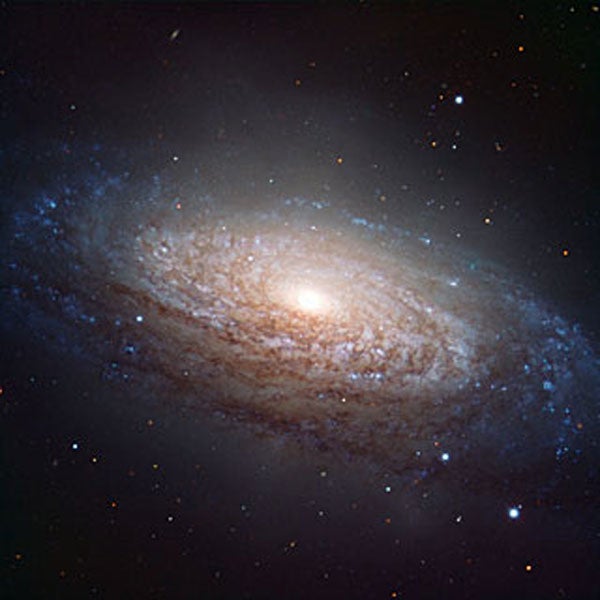The most distinctive feature of this bright galaxy is its long spiral arms that are dotted with star-forming regions and interspersed with veins of dust. The arms are rather irregular and patchy, making NGC 3521 a typical example of a flocculent spiral galaxy. These galaxies have “fluffy” spiral arms that contrast with the sweeping arms of grand-design spirals such as the famous Whirlpool Galaxy (M51) discovered by Charles Messier.
NGC 3521 is bright and relatively close by and can easily be seen with a small telescope such as the one used by Messier to catalog a series of hazy and comet-like objects in the 1700s. Strangely, the French astronomer seems to have missed this flocculent spiral even though he identified several other galaxies of similar brightness in the Leo constellation.
It was only in the year that Messier published the final version of his catalog, 1784, that another famous astronomer, William Herschel, discovered NGC 3521 early on in his more detailed surveys of the northern skies. Through his larger 18.5-inch (47 centimeters) telescope, Herschel saw a “bright center surrounded by nebulosity,” according to his observation notes.
In this new VLT picture, colorful yet ill-defined spiral arms replace Herschel’s “nebulosity.” Older stars dominate the reddish area in the center while young, hot blue stars permeate the arms farther away from the core.
The most distinctive feature of this bright galaxy is its long spiral arms that are dotted with star-forming regions and interspersed with veins of dust. The arms are rather irregular and patchy, making NGC 3521 a typical example of a flocculent spiral galaxy. These galaxies have “fluffy” spiral arms that contrast with the sweeping arms of grand-design spirals such as the famous Whirlpool Galaxy (M51) discovered by Charles Messier.
NGC 3521 is bright and relatively close by and can easily be seen with a small telescope such as the one used by Messier to catalog a series of hazy and comet-like objects in the 1700s. Strangely, the French astronomer seems to have missed this flocculent spiral even though he identified several other galaxies of similar brightness in the Leo constellation.
It was only in the year that Messier published the final version of his catalog, 1784, that another famous astronomer, William Herschel, discovered NGC 3521 early on in his more detailed surveys of the northern skies. Through his larger 18.5-inch (47 centimeters) telescope, Herschel saw a “bright center surrounded by nebulosity,” according to his observation notes.
In this new VLT picture, colorful yet ill-defined spiral arms replace Herschel’s “nebulosity.” Older stars dominate the reddish area in the center while young, hot blue stars permeate the arms farther away from the core.










